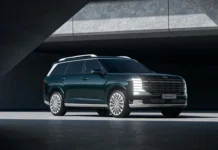
Short of owning a hybrid, getting up to 37 mpg is impressive.
When it first went on sale, the 2.5-liter-equipped Nissan Rogue already offered decent efficiency, but now there’s a new engine option in the lineup. That’s according to official EPA ratings site FuelEconomy.gov, which Car and Driver found had published the powertrain to their site. We don’t know much in an official capacity on this engine yet, but the outlet did say it’s part of a “small pilot program” meant to evaluate the powertrain for more widespread use.
According to official figures, the engine offers up notably better fuel economy than the carryover 2.5-liter naturally-aspirated unit. On a front-wheel drive model, the 1.5-liter Rogue apparently manages up to 30 City / 37 Highway / 33 Combined mpg — roughly 10% better than the larger mill depending on the driving conditions. All-wheel drive doesn’t even hurt that figure very much, with each cycle only losing 1 mpg (for 36 mpg combined). More luxurious trims beyond the base S seem to fare a little bit worse, but the figures still outperform what we have now, according to the official numbers.

No official specs yet
There are still plenty of question marks surrounding the new 1.5-liter turbo engine, though. Since it’s a brand new option for the Rogue, no one that we can see has tested it in actual real-world driving scenarios just yet. Nissan, for its part, noted its pilot program status, but didn’t share much in the way of what scale we’ll see it roll out, or when it will actually happen.
It may be awhile before we actually see this option in widespread operation. However, based just on those figures it’s likely the engine will head into permanent service before too long, perhaps later in the 2021 model year or in 2022. From here, Nissan may expand its presence into other models, but it makes sense to put it in the company’s best-selling crossover — where it would see the largest benefit — first.























